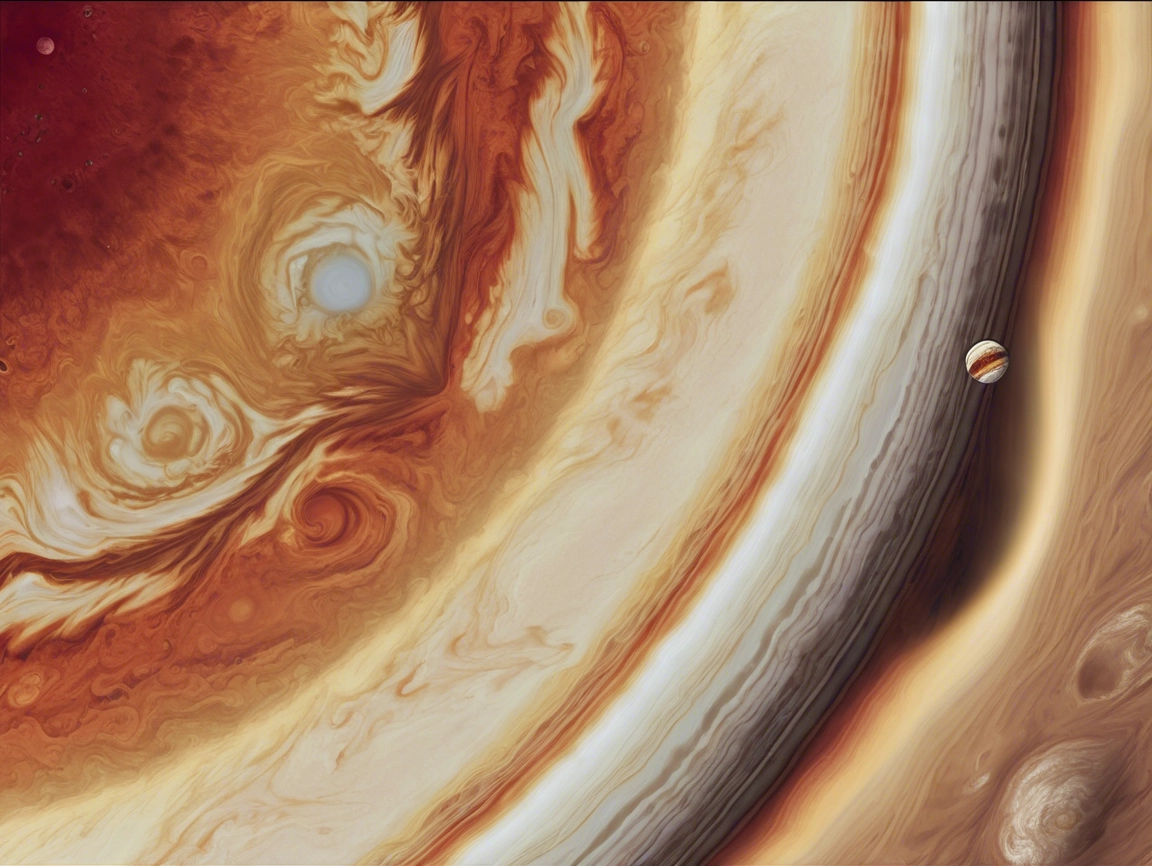It almost sounds like science fiction, but it really is true: Jupiter shrinks. As it turns out, our solar system's largest planet has not always been this way. In fact, 4.5 billion years ago, it was twice that size. And still it is contracting - slowly but steadily.
And that's not the only thing puzzling astronomers. Its famous Great Red Spot, the giant storm that has been visible for centuries, is suddenly behaving ... differently. As if it were breathing. As if it were alive.

Why Jupiter is shrinking: back to the beginning
Jupiter is a gas giant. Unlike planets like Earth, it has no solid surface. When it had just formed, it was extremely hot - and thus inflated. The young Jupiter was twice as large as now. Its huge gas mass was still in full swing.
Over the centuries, it has slowly cooled. And with that cooling Is Jupiter still shrinking. Its volume decreases, but its mass remains the same - so it becomes more compact. This process takes place over billions of years, but is still going on.
Jupiter's role in our solar system
Jupiter is not just another big planet - it plays a leading role in the solar system. Its enormous mass causes it to attract or push away other objects. As a result, it acts as a kind of cosmic shield: many comets and asteroids that might otherwise travel toward the inner planets are deflected or swallowed by Jupiter.
In addition, it subtly influences the orbits of other planets with its gravity. Scientists also believe that Jupiter's presence determined the distribution of matter in the early history of the solar system. Without Jupiter, Earth - and life on it - may never have existed.
The Great Red Spot: a storm behaving strangely
As Jupiter shrinks, its most recognizable feature also changes: the Big Red Spot. This colossal storm has been visible for more than 150 years, but recent observations from the Hubble Space Telescope show something remarkable.
The storm not only shrinks in size, it also moves in an unusual way. Hubble saw that the spot in and out - as if it were being squeezed. Every 90 days, the shape changes, just like a stress ball that swells for a moment and then contracts again.
And all this while Jupiter itself is also shrinking. Coincidence? Or is there a connection?
What causes the contraction of Jupiter?
There are two main reasons why Jupiter shrinks:
- Natural cooling
Jupiter radiates more heat than it receives from the sun. As it cools, its gas mass collapses. As a result, its diameter gets smaller - and that process has been going on for billions of years. - Internal contraction
Huge processes take place beneath the gas surface. Due to gravity and pressure, layers of gas are compressed. These forces cause Jupiter to shrink, even if it is barely visible within a single human lifetime.
What about that wobbling storm?
The Great Red Spot is affected by powerful jet streams. Those streams race along both sides of the storm, as if it were trapped between two walls of air. This probably causes the ‘squeeze effect.
But there is also something odd about it: If the storm slows down, it gets bigger. If it speeds up, it gets smaller. That contradictory movement has taken scientists completely by surprise. And it is happening simultaneously with the gradual shrinkage of Jupiter itself.
Why it matters that Jupiter is shrinking
That Jupiter shrinks, is not just a factoid for space fans. It tells us something fundamental about how gas giants work - not only in our solar system, but also at exoplanets in other galaxies.
- How long do storms last without solid ground?
- What role do jet streams play in the formation of stable weather systems?
- And how does a planet change physically through time?
All questions we can ask thanks to the study of Jupiter's shrinkage and the dynamics of its atmosphere.
What can you see for yourself?
The Great Red Spot is visible with a telescope, although you will need some magnification. Notice: Telescope systems with short focal lengths, such as the Seestar, are not suitable for this purpose. For planetary details, you need a classic telescope with more magnification, for example, a Celestron 114AZ or a Dobson 130/650.
Conclusion: Jupiter shrinks and we learn more and more
That Jupiter shrinks, we now know for sure. That his famous storm is suddenly wobbling up and down? We don't have a conclusive answer to that yet. But each measurement brings us closer to the core of this mysterious gas giant.
Next step: the James Webb Space Telescope. That will study the spot in infrared to see what's happening deeper into the storm.







